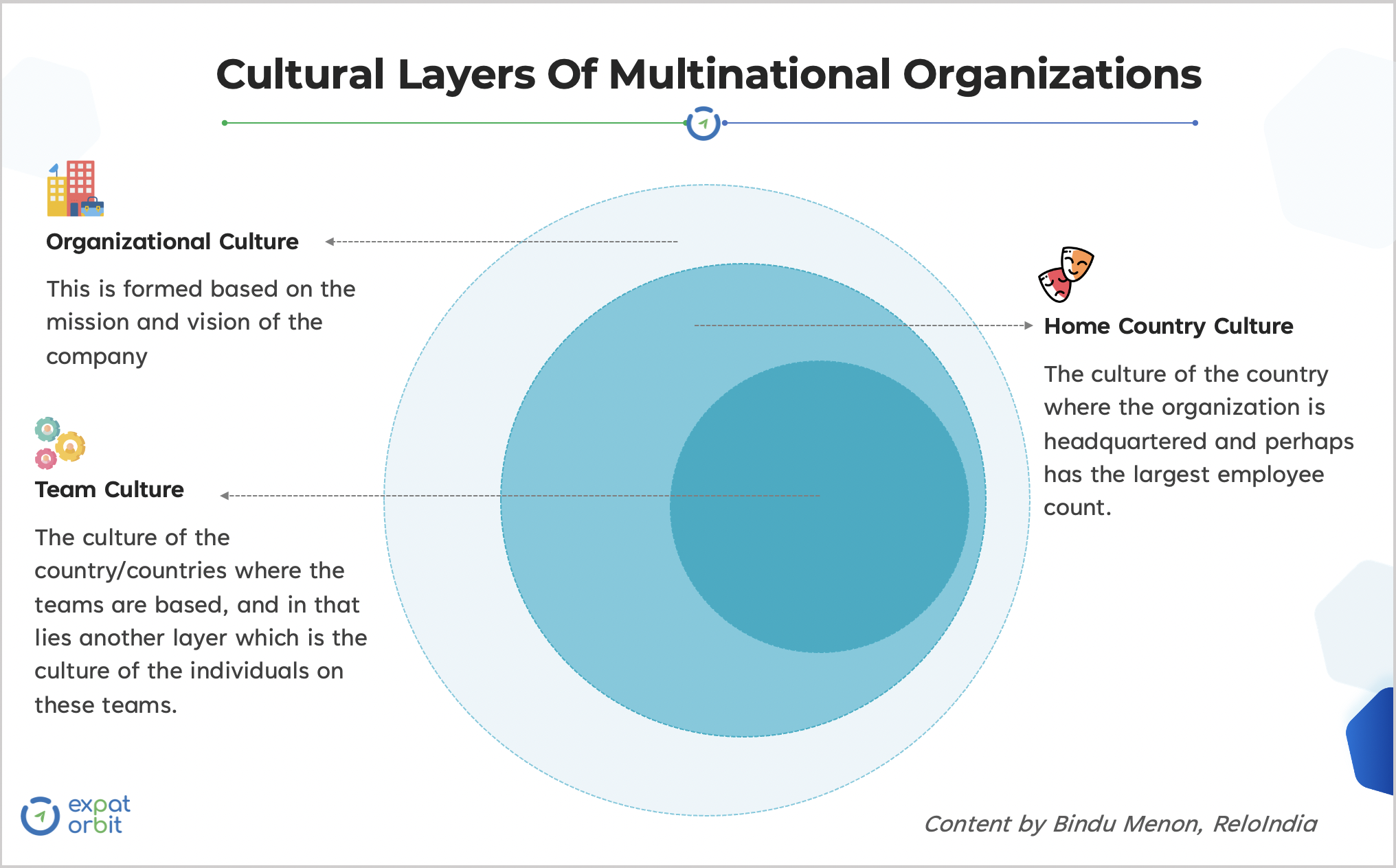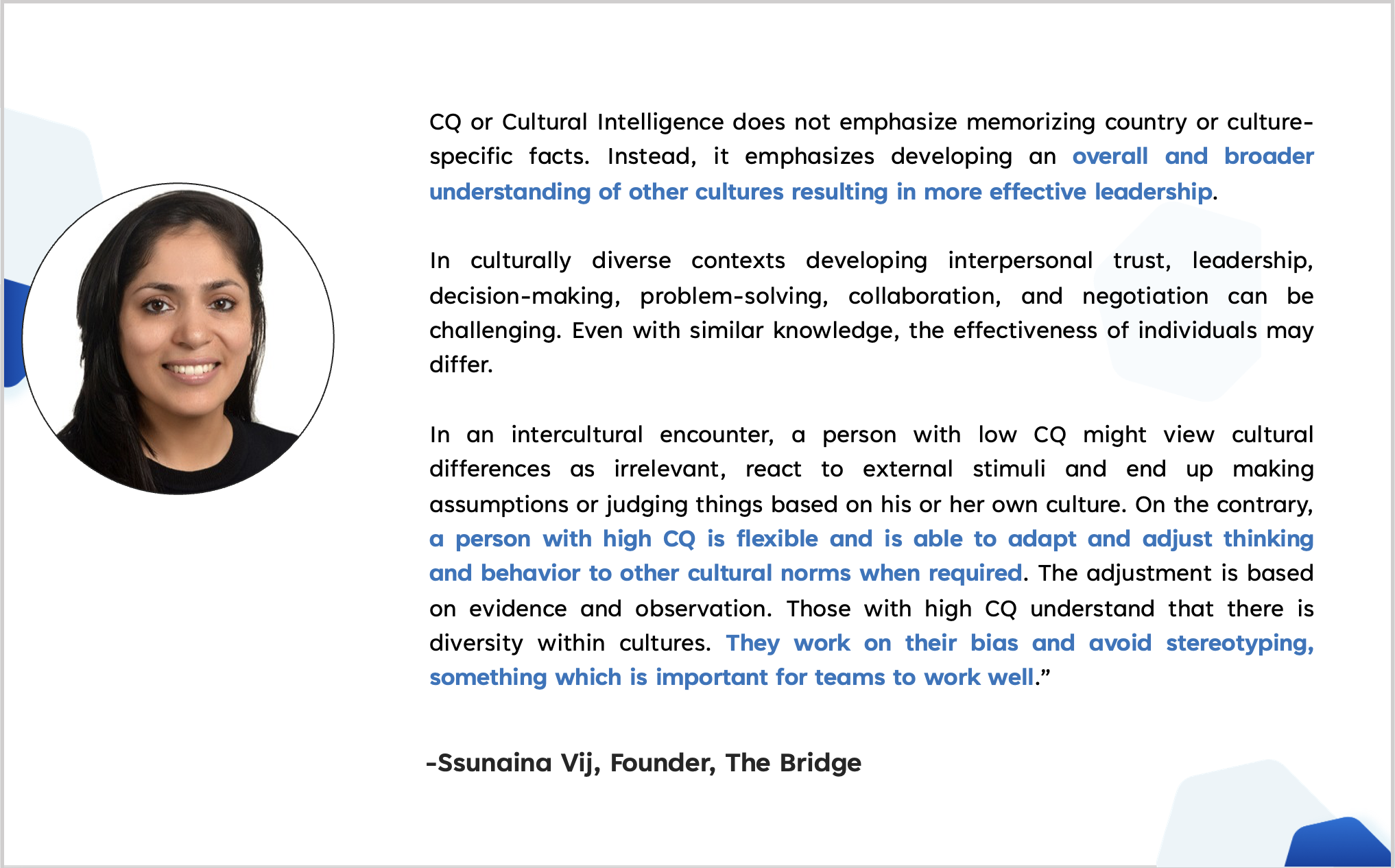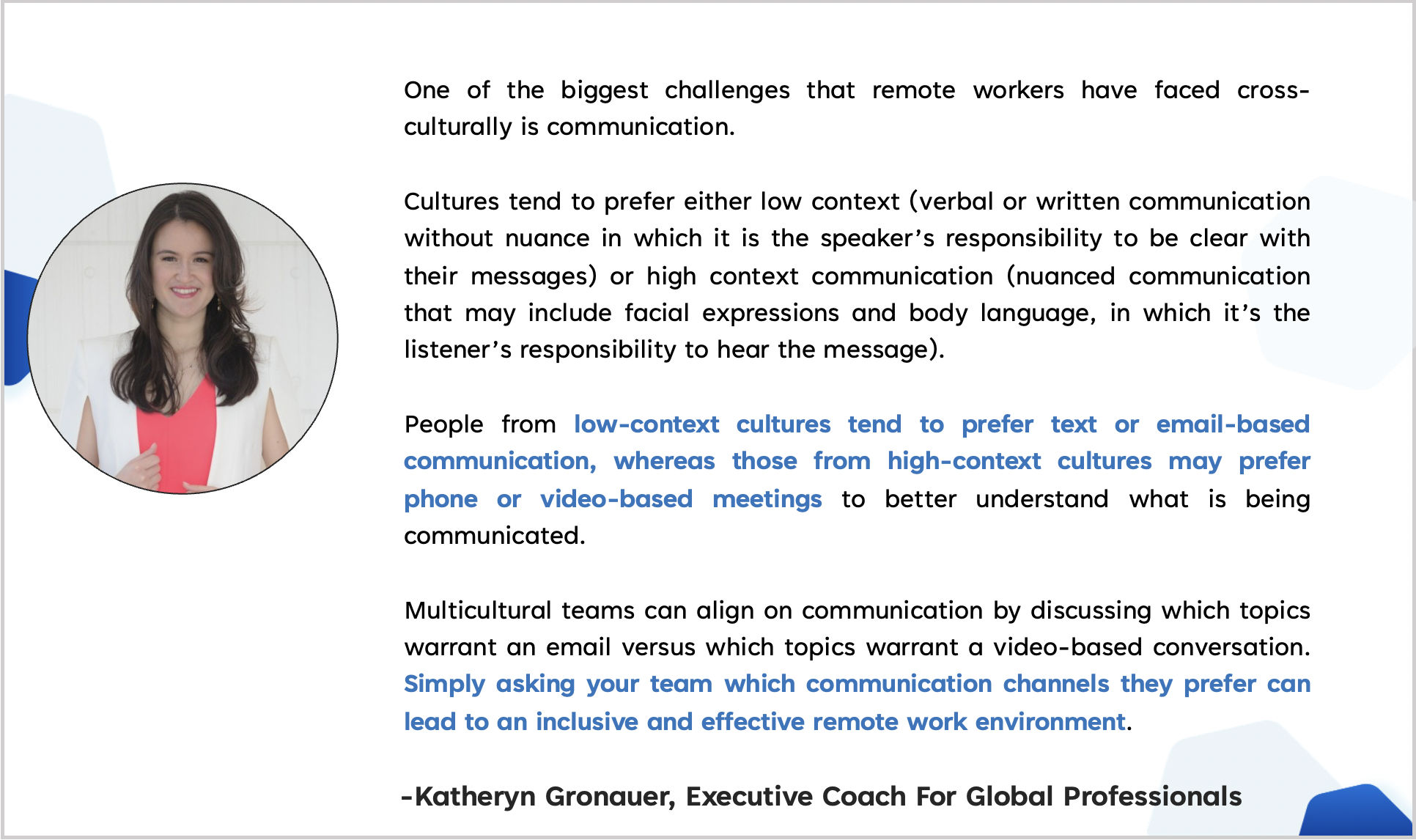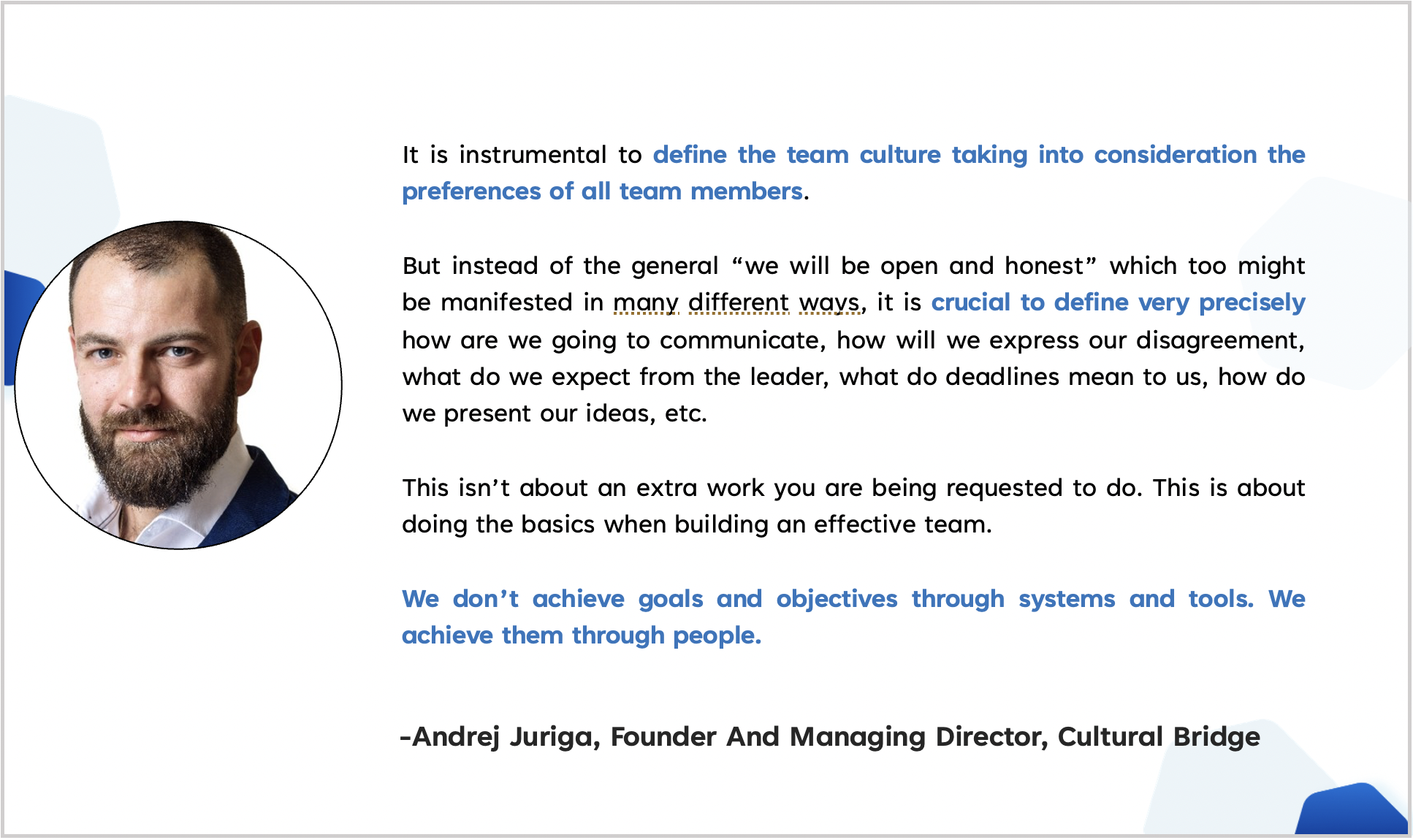Navigating cultural challenges while working with your remote team

‘Expanding globally’ or ‘hiring a global workforce’ used to be buzzwords with a very complicated back story, riddled with huge financial, time and effort investment. Cut to the present day, where a laptop, an internet connection, and an EoR (Expat Orbit) have made it a day to day reality. Now, a start-up can easily enhance its operational efficiency by hiring remote employees in India or globally, to make the best in class team. (Refer to the previous editions of our newsletter to understand how Expat Orbit steps in as an EOR to support startups on this journey)
Everything looks picture perfect, right? Now, these startups have an effective and efficient talent force to help them navigate these turbulent times. Except that it’s not.
There is something that can still derail it all for them -
Non-alignment of values between the overseas start-up (or any organization for that matter) and their remote Indian employees.
In May 2022, Gartner revealed, 76% of employees think that culture is very or extremely important for them to be effective at their job. So when only 24% of hybrid and remote knowledge workers report feeling connected to their organization’s culture, we can fathom how awfully organizations are losing on employee efficiency. The same press release tells us that organizations that succeed at connecting employees to their culture can increase employee performance by up to 37%.
This becomes especially important in cross border remote work
Different time zones | different language | different working styles | different culture
Here's what Bindu Menon, founder of ReloIndia and a leading cross-cultural sensitisation trainer who enables expats and MNCs make sense of India’s business and social culture, says about it:
In multinational organizations, usually, there are three cultures that come together and connect (refer to the diagram below)


Although there is no one-size fits all approach, we have curated a list of actionable tips to help you steer your way through cultural differences in a remote work setting -
1. Have a remote work policy
It should outline things like-
- Project management software/ tools - Trello, Basecamp, Asana, etc.
- Communication channels - what tool/ means to use for what purpose
- Time zones and preferred work hours
- Work-related documentation
- Highlight your company culture and how everyone should strive to uphold it - brand story, vision, mission, values
- How will you accommodate holidays for festivals and national holidays across countries where your teams and base organization is present
2. Hire employees who are high on CQ
Organizational success today is defined by much more than IQ and EQ.
Say hello to CQ.
Ssunaina Vij, a DEI strategist, and founder of The Bridge says,

3. Have an extremely warm and welcoming employee onboarding
“To get exceptional employee outcomes, you need exceptional onboarding,” says Gallup. Employees who get an exceptional onboarding experience are 2.6 times as likely to be satisfied with their workplace -- and consequently, far more likely to stay.
So how do you have a structured and proper onboarding for your remote employees? Below are some tips-
- Schedule a one-on-one virtual orientation,
- Give your remote hires a run-down of all the employee guides and policies,
- Make sure you have given them access to relevant tools and communication channels,
- Set up an online buddy session,
- Send a welcome kit (if your budget permits),
- Tell them about all the ways they can contribute to the organization,
- Emphasize that you value work-life balance and they should not forget to unplug
4. Deliberately create opportunities for the team to mingle
Believe it or not, workplace friendship is a real thing. It impacts employee results, loyalty, and efficiency. Isolated employees = gig workers who are not concerned about your values and culture. So, let your team communicate as spontaneously as they would have had they crossed each other’s path in the office lobby.
Tech tip: Explore tools/products like Cleary (your own office lobby, a digital one, where workers ask questions, post announcements, and congratulate each other on workplace wins) and Donut (the Donut bot randomly picks coworkers and sets them up for a virtual chat. It is essentially designed for connecting people who don’t already know each other).
There is a catch, however. The team is spread across not just multiple places in one country, but across multiple countries. So, there is another layer that you need to be extra cautious about while communicating-
Learning the basics of their language -While your Indian team members speak and understand English, it is highly likely that English is not their first language. So, a simple ‘hi, how are you’ in their language can go a long way in showing that you are committed to them.
Learn the art and science of asynchronous communication- Get used to late replies, not because your teammates are lazy, but because they live and work in a different time zone. Learn to be very detailed in your emails - your team should have all the information before they start working. Follow-ups become difficult when not working in sync.
Rotate meetings between time zones, keeping everyone’s convenience in mind. Specify how you intend to communicate in an emergency situation.
To video call or not to video call?- You don’t want to miss out on non-verbal cues. And Zoom fatigue is also real.
Katheryn Gronauer ACC, an executive coach, and trainer specializing in leadership, cross-cultural communication, and Japanese working style, has some cues:

Tech Tip: You may use video communication tools such as Loom or PingPong which lets you record your screen and yourself together, as an alternative to live video calls.
Avoid slangs - to stay from confusion, misunderstanding, and misinterpretation.
Take a detour from work- Talk about your pets, favorite books, and local food. Build genuine friendships :)
Andrej Juriga, certified facilitator of Emotional and Cultural Intelligence, and Managing Director of Cultural Bridge, comments:

5. Organise cultural diversity training
Proactively sensitize your remote work crew towards cultural differences and educate them on what’s appropriate and what’s not.
Cultural diversity training is not an onboarding formality anymore or something that employees should be simply allowed to ‘mark as complete’.
Make the training an integral part of your organization’s DNA. Hire the best cultural trainers you can and use the most innovative methods. Harvard Business Review, for instance, suggests using interactive theater to show employees, rather than just tell them how to be culturally sensitive. (In interactive theaters employees learn about bias by watching real-life scenarios in meetings, interviews, and career-development conversations, portrayed by professional actors).
The idea behind cultural diversity training is not to teach fun facts and trivia about other cultures but to make employees shed their implicit/unconscious bias (explained below) and enable them to adapt to other cultures seamlessly.
6. Hire a Chief Remote Officer
We have devised new ways of working. Our workforce is almost always working remotely. This has far-reaching consequences on organizational “culture”. Might as well have someone to oversee it all - a Chief Remote Officer.
The Chief Remote Officer can be in charge of
- designing the overall remote working policy
- the global recruitment team which is constantly shifting hiring policies to suit a cross-border remote working model,
- onboarding remote employees in the best way possible,
- office development and design if its a partially remote organization or whenever employees are on an ‘onsite’ visit,
- the day-to-day collaboration tools the distributed workforce uses,
- the overall workplace experiences for all employees
7. Beware of these biases-
Proximity bias (out of sight, out of mind)- As per BBC, proximity bias is the unconscious and unwise tendency to give preferential treatment to those in our immediate vicinity.
So if you are in a hybrid work model, make sure that you do not pass on people just because they are not sitting beside you.
Similarity bias (birds of the same feather)- This is our tendency to be drawn to people we can ourselves in.
Remember to intentionally create shared experiences for people to mix with diverse people in your remote/ hybrid team.
Implicit/ Unconscious bias- When you stereotype people based on your prejudices and preconceived notions, rather than facts and data, you are said to be suffering from implicit or unconscious bias. It is a big barrier to recruiting and retaining a diverse workforce.
Finally, we suggest you play ‘gratitude tennis’
We came across Matts Chnuck’s “remote work paradox” thread, and we love it! Especially the idea of playing “gratitude tennis” to intentionally connect remote workers with each other.
Here are the rules:
- Player 1 serves up something they are grateful for (like a ball wrapped in gratitude).
- Player 2 returns the gratitude with something they are grateful for.
- Keep serving gratitudes back to all the players until the 3-min timer goes off.
On that note, we wish you a happy, collaborative, and productive remote working experience. If you also have cross border remote teams and would like to enhance your organizational efficiency by building CQ, we are here to assist.

